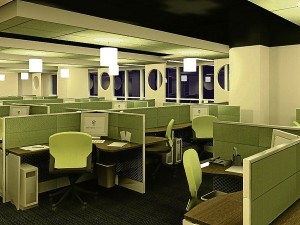Reasons to consider ‘design-build’ arrangement

MANY business process outsourcing (BPO) offices engage in design-build contracts due to the speed at which their facilities have to be built. Oftentimes, the contractors are specialists in this kind of project, where well-coordinated engineering and interior design is essential to the proper functioning of the facility.
Design-Build or “turnkey” contracts have existed for the longest time. And why not? They have many advantages, especially during today’s world of complicated and confusing options for design details, construction methods and materials. The design-build process makes decision-making and implementation cheaper and usually, a lot faster. It also saves an owner time from the squabbling among too many members of a design and construction team—a problem all too common with having too many specialists engaged in one project.
In a “Design-Build” or “Design and Build” arrangement, a client employs the services of a singular entity—usually a contractor with some architectural or interior design background—to execute firstly in paper the design of a project, and then later, build the actual project himself. This is a much simpler approach as against an owner-architect/designer-contractor arrangement wherein an owner signs into separate contracts, first with the architect/designer, then with the builder or contractor.
Best done by abled designer
This is not to say that everything works fantastically well for a design-build contract. Specialty projects that have more complex operational needs are still best executed by an abled designer or a specialist designer (and the entire engineering team), and later bidded out to a contractor. An exception would be if a design-build contractor himself is a specialist in that project type, and manages to coordinate the design and implementation of not only the architectural or interior design aspect of the project, but that of the other engineering requirements—air-conditioning, data cabling, lighting and electrical—as well. Usually, a design-build contractor for specialty work would be a consortium of experts that engage collectively in a single contract with the owner, thus bringing the expertise of a few brains forward as one very abled entity.
The design-build approach though does not usually benefit large projects where it may make better sense to thoroughly specify a design, and put it out to bid to several contractors. The scale of the project, coupled with the lowest possible rate for cost, can give an owner substantial savings in the construction cost. In this situation, it goes back to the economies of scale.
Article continues after this advertisementFor smaller projects
Article continues after this advertisementThe Design-Build approach bodes well for smaller projects, especially when both budget and schedules are tight. Thus, its popularity for small apartments, offices and home where there is a bigger variety of materials being used in smaller quantities. More details and materials lead to bigger costs due to the need for more coordination by your builder. Consolidating this assortment into one contractor’s “efforts”—combining the intricacies of design and construction—tighten the noose and can lead to substantial savings.
Again, it’s all in the economies of scale. But don’t play penny-pincher when it comes to specialty work like the office data center, the restaurant kitchen, or closet and cabinet systems. In these situations, engaging a separate design-build contract with a specialist for these items may not necessarily ensure cost savings, but will assure you of a suitably designed and properly functioning specialty system. In this situation, you may end up paying more, but you will definitely get more bang for your buck.
There are many small details to look into when engaging in a design-build contract, but that will have to be another lengthy discussion all together. Exploring a design-build process can certainly be beneficial to an owner. The method may still, in this country, be a bit rough on the edges, but it will keep growing to be more refined and more efficient. It already has in many places all over the globe. Aside from savings in time and cost, it is less stressful than the process where one deals with many entities and thus, a huge project team. It may still not make the design and building process completely enjoyable, (but does that ever happen?) but it will certainly make it a little less dreadful. I look at that as a good start.
Contact the author through [email protected] or through our Asuncion Berenguer Facebook account.